This article is more than 5 years old.
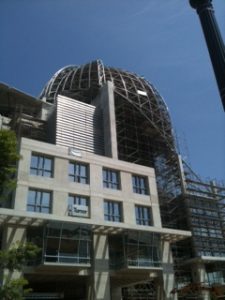
I have traveled to and from San Diego for the Society of American Archivists Annual Conference “Beyond Borders” and I have a lot to tell you all about. The first day was a long day of travel and an equally long facilitated “SAA/Regional Archival Organization Summit” where myself and Katie Nash of Elon University represented SNCA (the Society of North Carolina Archivists). The idea of this summit is to gather state and regional archives associations and prioritize what is important to us and create an action plan. There were quite a lot of representatives from regional conferences including Rocky Mountain Archivists, Inter-Mountain Archivists, California Archivists, Metropolitan New York Archivists, Ohio Archivists, Northwest Archivists, Southwest Archivists, Hawaii Archivists, Florida Archivists, and Midwest Archivists. After discussion, the efforts to establish formal lines of communication between state, regional, and national organizations are now a priority. In addition to this, the issues of advocacy, national continuing education programs, and a regional committee at SAA are all ideas that will be presented to SAA Council in an effort to make the regional and state organizations heard.
I did have a chance to pop my head into the Archivists’ Toolkit/ Archon Roundtable Meeting. Archivists’ Toolkit (AT) is the data management system we currently use in Special Collections at ZSR but there has been talk of AT and Archon merging into ArchivesSpace. This talk has been going on for many years now, but some of the news I heard at this meeting was that Lyrasis will be the organizational home of the ArchivesSpace and that Hudson Molonglo will be the development partner. There wasn’t much new information about ArchivesSpace. Two very basic and brief screenshots of ArchivesSpace were shown as well as encouragement to join the Google Group or participate in beta testing. Needless to say, the wait continues on what is promised to be a very exciting software change in the archives world, eventually.
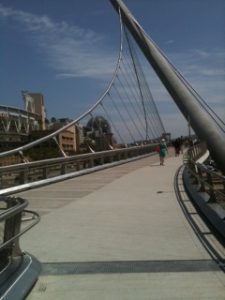
Finally, Craig and I left the conference hotel and our own fabulous Gaslamp District hotel in search of a San Diego staple, fish tacos. We ended up at the fantastic, fresh, and adventurous Mariscos El Pulpo where we had fish and octopus tacos! Yum!
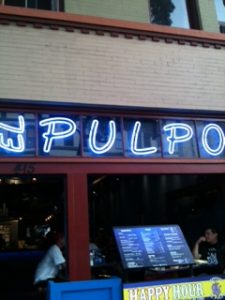
Day 2 began with an inspiring Plenary Session featuring both the Archivist of the United States David Ferriero and Historypin‘s Jon Voss. The AOTUS Ferriero discussed the history making Presidential Memorandum on Managing Government Records as part of the Open Government Initiative that in the words of Barack Obama will “establish a system of transparency, public participation, and collaboration. Openness will strengthen our democracy, and promote efficiency and effectiveness in government.” Voss emphasized the “mashup culture” of linked open data in libraries, archives, and museums (LODLAM). His interest in taking a search from an idea, to a location, to a picture, to a catalog record, etc. is possible through linked open data. Instead of closing information off, we should open it up. He stated simply “we are a community of innovators, not litigators. We want your data.” I must say, he got the crowd excited.
My first session of the day interested me because of the prospect of hearing about the digitization of audiovisual collections, something we here at ZSR are talking about. “Choose You Own Arrangement: Using Large-scale Digitization Efforts to Process image and Audiovisual Collections” was a very interesting session indeed, if not all that applicable to our audiovisual collections, definitely helpful in some of our photo digitization initiatives.
Sarah Dorpinghaus of the University of Kentucky spoke of her work at the Lowcountry Digital Library on the Rabbi William A. Rosenthall Judaica Collection and Papers. This particular collection came with no original order, was a very large and varied collection, and was under tremendous time constraints due to grant funding and donor expectations. In an effort to make this project happen, the archivist decided to forgo arrangement and use digitization as a form of arrangement and description. By starting at the beginning of a box, assistants took each item from the box, scanned it, put it in a folder, assigned metadata and location information, and out it in a box for it to stay. No series arrangement by subject, date, format, or anything we are used to. The processing staff spent the most amount of time creating extremely robust metadata (although the Sarah did say she would lessen it if she could do it again) to match to the digital images in ContentDM rather than re-arranging the materials beforehand. She did put together a finding aid that included front matter to contextualize the container list style of finding aid, but no other processing was done on the collection. The advantages are that there is a better handle of the contents of the collection as well as access to some of the materials. The disadvantages are that the collection isn’t completely digitized nor is there a clear understanding of the whole collection yet.
Benn Joseph of Northwestern University provided another perspective on a negative digitization project. The Justine Caldwell photo collection is limited to campus use only as part of the art slide library. This collection consists of negatives of Caldwell’s PhD work in African Studies at Northwestern in the 1950’s. A verbal agreement was struck between the donor, 90, and the library to digitize the negatives and return them to the donor, to be given back to the library upon her death. Time was of the essence to have the donor help identify metadata for the negatives before this information was lost. The workflow went from scanning the items in batches, printing copies for Caldwell, her handwriting information on copies, and returning them to the library. The narrative nature of her description proved both helpful and hindering. During the process, the donor passed away, leaving incomplete metadata and an incomplete project in general. In addition to the question of completion, the archivist now asks the question, is this collection processed? He discussed the fact that there was so much work done in description and scanning that the 1 linear foot of “processing” seems to sell short the amount of work and time spent. These questions were thought provoking and on the minds of many archivists processing and digitizing collections.
Finally, Amanda Ross of the Richard Nixon Presidential Library and Museum spoke of the Nixon Era White House tapes. Needless to say, she has a very interesting job.
Lunch followed with colleagues from near and far. Katie Nash of Elon University, the archivist formerly known as Audra Eagle, Craig and I had a delicious meal at a restaurant called Mission.
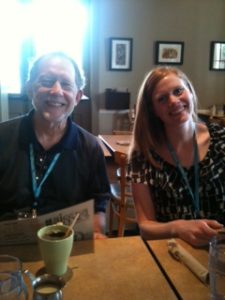
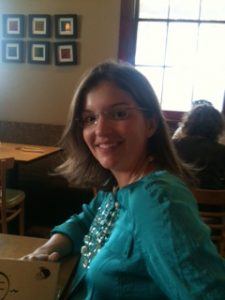
A very exciting after-lunch experience was the mass of archivists waiting to see the Green Bay Packers exit the conference hotel on their way to play the San Diego Chargers. Although we didn’t see (or recognize) anyone famous, it did put the archivists into quite a tizzy and got all of us to get out our smart phones and start snapping pictures. See the crowd in the picture below:)
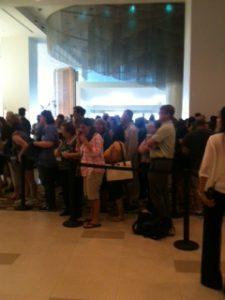
The second session of the day “Hybrids and Legacies: Challenges of Finding Aids in the Digital Age” talked about something everyone is talking about, born digital collections.
Eira Tansey of Tulane University and Lucinda Cockerell of Middle Tennessee State University’s Center for Popular Music both spoke of their efforts to get their paper finding aids in a digital format, something we here at ZSR are very familiar with.
Alexis Antracoli of Drexel University described her work with a hybrid collection of traditional “born physical” materials as well as 35GB hard drive and 500-plus pieces of removable media. The issues that came up such as original order and space are ones that archivists grapple with all the time, but the fact that digital media was part of it created an interesting twist. She discussed her decision to retain the full connection of the born digital items to the analog folder and not process it as two parallel collections, analog and digital. This meant creating an access copy to integrate into the finding aid in addition to a preservation copy. The conversion and description of the newly created copies added time to processing. It was imperative that description of the digital copy was present and consistent with the analog folder it corresponded with.
Olga Virakhovskaya of the University of Michigan’s Bentley Historical Library described her work on a hybrid collection that was processed quite differently than Alexis’. In spite of the fact that the analog portion of the collection was already processed when a 10GB hard drive showed up at the library, Olga would have processed this separately anyways. Because the hard drive was a separate entity, they treated it as a unique series within the larger finding aid. With file renaming, creation of access copies, and some rearrangement to make things more understandable Olga integrated the digital files into the finding aid for the whole hybrid collection.
The day ended with the opening of the Exhibit Hall where we could mingle with vendors and archivists. The All-Attendee Reception finished the evening. It was a beautiful party on the lawn of the hotel next to the bay front. As soon as the cake pops were gone, we called it a night.
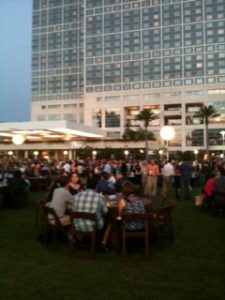
“Crowdsourcing Our Collections: Three Case Studies of User Participation in Metadata Creation and Enhancement” was a very interesting session on Friday morning.
Courtney Michael spoke of her time working on the WGBH Educational Foundation. At WGBH they approach the crowdsourcing of their educational videos as a mixture of private and public contributions. Although the “public” can contribute, one must acquire a login and password to be able to see items that need transcription on metadata. This allows WGBH to control who is altering what. This is what they call a “participatory cataloging” project where people can tag, identify, transcribe, and add metadata.
Meredith Stewart of the National Archives and Records Administration (NARA) talked about the amazing Citizen Archivist program which is an amazing program started by the AUTOS in 2010. As a citizen archivist you can tag, transcribe, edit articles, and even index the census. There is no login, meaning anyone can contribute at any time. The variety of work, the degrees of difficulty, and the access to materials has made the program extremely successful. NARA has not had issues with bad work as the work is iterative and people can continue fixing records as expertise permits.
Finally, Greg Prickman of the University of Iowa Special Collections and University Archives described the crowdsourcing effort to transcribe their Civil War Diaries. He described that he started the project with no budget, software, or administrators and now it has been an incredibly successful. It was slowly going along before it went viral from a reddit.com “TIL” post “TIL [Today I learned] how to participate in history while sitting on my a** by transcribing Civil War Diaries online.” Although this viral coverage did crash their server, it also brought a lot of attention to the project resulting in completion of the transcription of all of the Civil War diaries they had online at the time.
All in all, I had a very good conference. I heard a lot of great ideas, met some wonderful new archivists, and caught up with some wonderful old archivists. If anyone would like to discuss more about my experience or hear about any round table or section meetings, please ask me. I would love to chat about it.
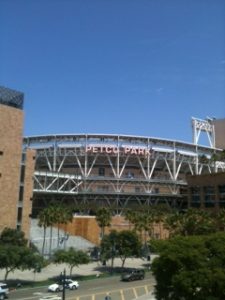
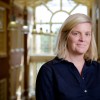
4 Comments on ‘Rebecca at SAA’
“The archivist decided to forgo arrangement and use digitization as a form of arrangement and description”??? This is archival sacrilege, but somehow refreshing.
It is amazing how much great information was presented at SAA- we were at the same conference-but we both had different, and equally incredible experiences.
Great stuff in here, Rebecca!
You really covered a lot of ground at SAA!
Nice summaries of so many interesting sessions! Thanks for sharing these and hopefully we can learn some lessons from other folks’ experiences.